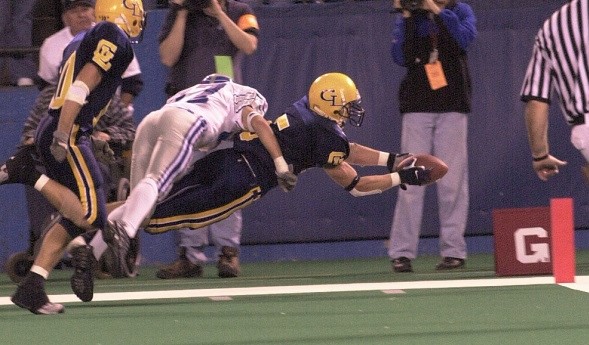
Heads and Heat
August 16, 2012
We are engaged in very serious discussions. They’re not only complicated, with unintended negative consequences possible from what are thought to be positive actions; they’re also a matter of life and death.
The topic is football – the high school sport under most scrutiny today and suffering from the most criticism it’s seen since the 1970s when catastrophic neck injuries spiked, liability awards soared, many insurers balked, and most helmet manufacturers abandoned the business altogether.
During recent years we have learned about the devastating long-term effects of repeated blows to the head; and we’re trying to reduce such hits. We’ve learned that 70 percent of concussions in football result from helmet-to-helmet contact, and we’re trying to have coaches teach blocking and tackling differently and have officials penalize “high hits” consistently and rigorously.
During the past several years we’ve learned that serious heat illness and heat-related deaths are 100 percent preventable, yet nationwide there were 35 heat-related deaths in high school football alone from 1995 to 2010; and we’re promoting practices that acclimatize athletes more gradually than “old school” traditionalists might advocate.
As we simultaneously address issues of heads and heat in football, some coaches may think we’re being overbearing, while many in medical fields say we’re out of date, citing higher standards of the American Academy of Pediatrics, National Athletic Trainers Association and National Federation of State High School Associations, as well as many of our counterpart organizations across the country.
As we consider in-season changes to improve athlete acclimatization and reduce blows to the head, we should be open to making out-of-season changes that work toward rather than in opposition to those objectives. There can be no sacred cows. The topic is too serious.
Ultimately, if we err in the outcome of this year’s discussions about heads and heat in football, it must be on the side of safety, on minimizing risks for student participants. They deserve it and, once again, the sport of football needs it.

Moment: Comets Make Last Minute Count
October 8, 2020
By John Johnson
MHSAA Director of Broadcast Properties
A hop and a wave.
That’s what it took for Grand Ledge to pull off the most unlikely of comebacks in the 2000 Division 1 MHSAA Football title game at the Pontiac Silverdome, doing what no team has ever done – scoring two touchdowns during the final minute to claim a 19-14 victory over Utica Eisenhower.
The game was your typical large-school, heavyweight fight, tied at 7-7 with less than five minutes to play when Eisenhower’s Chris Hoover broke loose for a 36-yard scoring run. But Grand Ledge bounced right back, mounting an 80-yard drive following the ensuing kickoff, capped by quarterback Matt Bohnet’s five-yard scramble to the end zone.
With just 53 seconds left on the clock, Comets coach Pat O’Keefe, already known as one of the state’s most successful baseball coaches, decided he had to gamble. Go for two.
“We were tired,” O’Keefe told the Lansing State Journal after the game. “I thought the momentum was there for us and I didn’t want to play overtime.
“We thought about it a little bit, and I saw it in the kid’s faces. I asked Matt (Bohnet) what he wanted to do and he said, ‘Let’s go for the win.’”
But the conversion play broke down. Bohnet couldn’t find an open receiver and was tackled short of the goal line.
Everyone in the Silverdome knew what was coming next. No one could have seen, however, what was going to happen.
The onside kick by Nick Sandy took a textbook hop, and Colin O’Keefe flew through the air to grab it and give the Comets new life.
Two plays later, Bohnet was scrambling again – and a wide-open Tim George was downfield waving at him. Bohnet connected with George at the 15-yard line, and after shaking off one would-be tackler, George headed for the end zone, finishing with a pylon dive that gave the Comets the lead. It was the second TD catch of the game for George.
“I caught the ball and got bumped,” George told The Detroit News. “I saw the goal line and I knew I had to get there. I didn’t even think about going out of bounds.”
You can watch the final moments of the FOX Sports Detroit coverage of the 2000 Grand Ledge-Utica Eisenhower game below.
PHOTO: Grand Ledge's Tim George dives for the winning touchdown during the final seconds of the 2000 Division 1 Final at the Pontiac Silverdome. (Photo by Gary Shook.)

